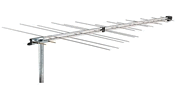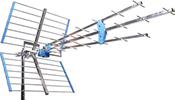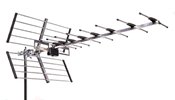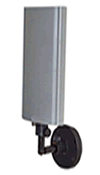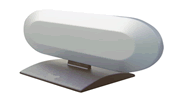ANACOM - Autoridade Nacional de Comunicações has now established the timetable for the switch-off of analogue television transmissions. Under the terms of the decision, the 1st phase will take place on 12 January 2012 and will cover the coastal area of the country, representing 70% of the population and 39% of the territory; in the 2nd phase, taking place on 22 March 2012, analogue terrestrial broadcasting will be switched off in the Autonomous Regions, corresponding to about 5% of the population; and in the 3rd and final phase on 26 April 2012, transmissions will cease in the rest of the mainland territory, covering about 25% of the population.
In some areas, the switch-off of analogue television will take place within a few months, in January 2011, the date on which ANACOM will begin a number of pilot tests. Since 2009, reception of the existing open signal TV channels, RTP 1, RTP 2, SIC and TVI has been possible using the digital terrestrial network (DTT), which currently covers around 85% of the population. By the end of this year, 100% of the population will be covered.
Digital Terrestrial Television will enable more and better television services. DTT has better sound and image quality; and it allows access to an electronic programming guide; enables digital recording, depending on the type of set-top box used, with the possibility of scheduling or pausing the broadcast in real time. The actual improvement in quality of sound and image will be felt most by those who have integrated digital television sets, which should be compatible with the MPEG 4/H.264 standard. People without these television sets will need a set-top box to decode the signal.
DTT also presents special added value in areas where reception of the television signal requires the use of two aerials, since with DTT users only need to have one aerial, pointed at a single relay.
In addition, in terms of aerials, the only thing required in order to properly receive DTT is to have them repointed. Only occasionally will it be necessary to replace the aerial, since most aerials that are currently being used to receive analogue TV broadcasts are suitable for receiving the digital signal of DTT. This is the case of the widely used log-periodic aerials (Fig. 1), which are mixed aerials, operating simultaneously in UHF and VHF bands.
Fig. 1 - Log-periodic aerial. These are mixed aerials, operating in the UHF band and at the same time in VHF
If for any reason, the person needs to buy a new aerial, either because theirs is too old or is damaged, there are aerials on the market which are suited for the reception of DTT signals in Portugal (Fig. 2-5), either for common reception or individual reception. There are also models for use inside the house.
Fig. 2 - Outdoor Yagi aerial with 3 elements. Typical channel 21 to 69 bandwidth-UHF Band 3 element angular array, makes it directional and wideband
Fig. 3 - Outside Yagi aerial with one element, typical channel 21 to 69 bandwidth- UHF band. With only one element it has a slightly lower gain than the Yagi with 3 elements, but has a lower average cost
Fig. 4 - Flat outside aerial. Typical bandwidth between channels 5 to 12 (VHF) and channels 21 to 69 (UHF). Aerial with less of a visual impact, but requires connection to electricity mains
Fig. 5 - Flat indoor aerial, which can be used in areas where portable indoor reception is possible. Typical bandwidth between channels 5 to 12 (VHF) and channels 21 to 69 (UHF)
A significant proportion of the population will be affected by the process of the switch-off of analogue transmissions. Currently, there are about 1.5 million households in Portugal that only receive open signal television broadcasting and who will be affected by the migration process to digital broadcasting - these people will need to make sure that they are able to receive the DTT signal.
In order to inform people and clear up any queries, ANACOM is setting out a communication plan that will start running after the summer.
Consult:
- Switch-off plan https://www.anacom.pt/render.jsp?contentId=1033345

